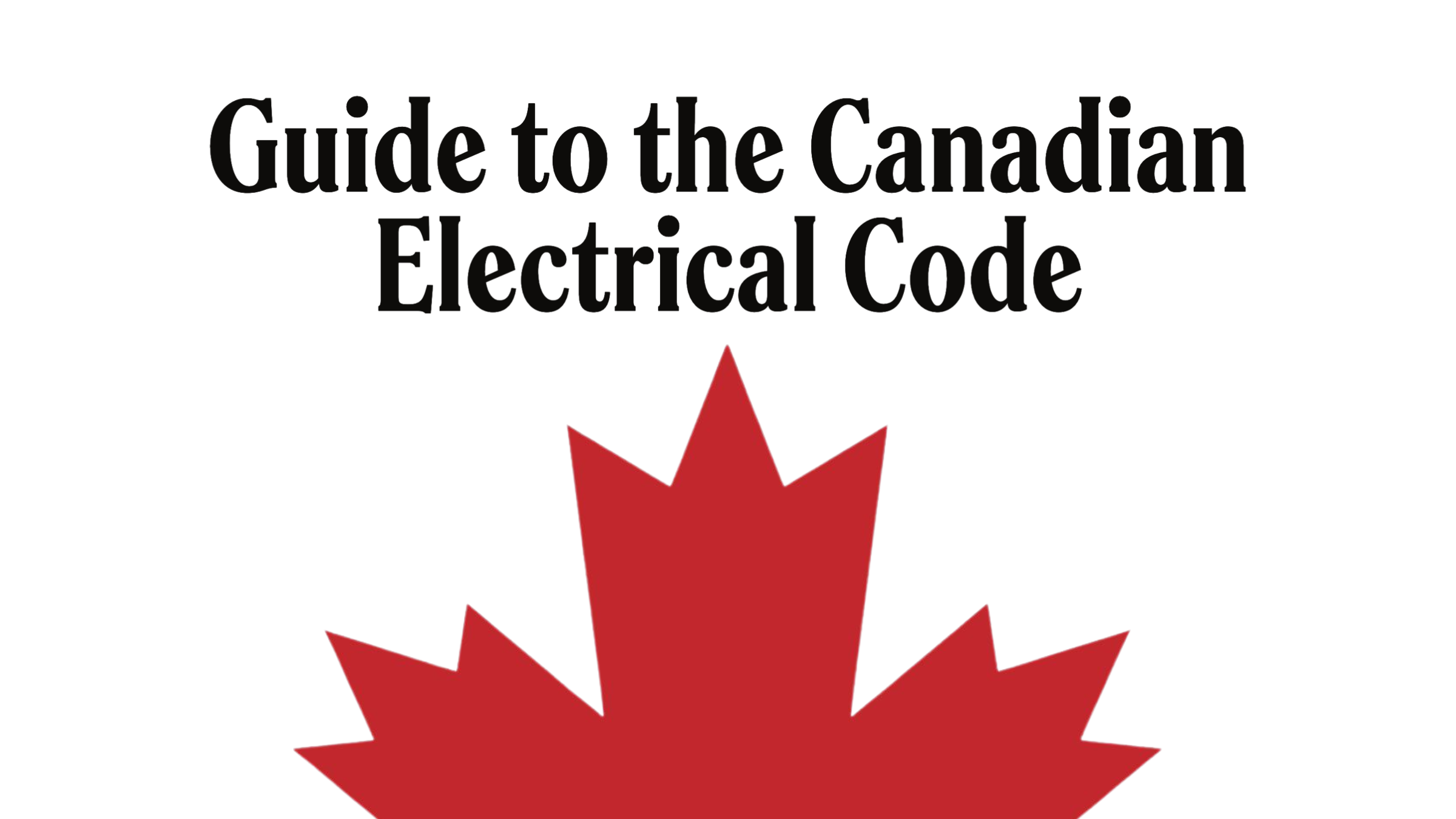Guide to the Canadian Electrical Code, Part 1[i], 25th Edition– A Road Map: Appendix J – Annex J18 – Part A

July 5, 2023
By William (Bill) Burr[i]
[i] William (Bill) Burr is an associate member of the Canadian Electrical Code, Part 1, Technical Committee and formerly Chair of the Canadian Advisory Council on Electrical Safety (CACES), Chief Electrical and Elevator Inspector for the Province of BC & the Northwest Territories, Director of Electrical and Gas Standards Development and Director of Conformity Assessment at CSA Group. Bill can be reached at Burr and Associates Consulting billburr@gmail.com..
Appendix J – Annex J18 – Part A (The 25th Edition of the CE-C, Part I, (C22.1-21) * is available from CSA Group. This discussion of Appendix J – Annex J18 is based on the 25th edition).
The Code is a comprehensive document. Sometimes it can seem quite daunting to quickly find the information you need. This series of articles provides a guide to help users find their way through this critical document. This is not intended to replace the notes in Appendix B, or the explanations of individual requirements contained in the CEC Handbook** but will hopefully provide some help in navigating while reading the Code.

Annex J18 is permitted, optionally, for use in additions, modifications, renovations or operation and maintenance of existing facilities employing the Division system of classification. The rules of Annex J18 are normative (mandatory) where used and amend or supplement other requirements of the Code. Additional informative (non-mandatory) information is contained in Annex JB.
Annex J18 is divided into four parts – General, Class I, Class II and Class III locations: Due to the size of Annex J18; it will be discussed in multiple parts. This is Part A – General
General
The General Part of Annex J18 applies to all installations and equipment installed under this Annex.
Rule J18-002 provides special terminology definitions for terms used in this section that are supplementary to the definitions in Section 0. Note there are specific definitions for Seals including Explosion seal, Flammable fluid migration seal, Process seal, Dual process seal equipment, Primary process seal, Secondary process seal, and Single process seal equipment. Annex JB provides additional descriptions of the various Seals.
Rule J18-004 Divides Class I locations into:
- Division 1 locations where explosive gas atmospheres are present continuously, intermittently, or periodically during normal operation, and
- Division 2 locations where explosive gas atmospheres occur only abnormally and for a short time or locations adjacent to a Division 1 where explosive gases could be communicated.
Rule J18-006 Divides Class II locations into:
- Division 1 where, under normal operating conditions or abnormal operation or failure of equipment, combustible dust may be in suspension continuously, intermittently, or periodically in sufficient quantities to produce explosive or ignitable mixtures, or conduct electricity, and
- Division 2 where, under infrequent malfunctioning of handling or processing equipment, combustible dust may:
- be present in quantities sufficient to produce explosive or ignitable mixtures but only for short periods of time, or
- develop combustible dust accumulations on equipment sufficient to interfere with the safe dissipation of heat or become ignitable by an operational failure of equipment.
Rule J18-008 divides Class III locations into:
- Division 1 locations where readily ignitable fibres or materials producing combustible flyings are handled, manufactured, or used; and
- Division 2 locations where readily ignitable fibres other than those in process of manufacture are stored or handled.
Rule J18-010 prohibits unauthorized repairs or alterations on live equipment and requires equipment to be maintained in its original safe condition.
Rules J18-050 and J18-052 require that electrical equipment installed in Class I, II, or III hazardous locations must have markings suitable for the Class and Division in which the equipment is installed and for the class of location and specific material that will be present:
- for Class I, the specific gas with the atmospheric Group designation –
- Group A – acetylene,
- Group B – butadiene, ethylene oxide, hydrogen, manufactured gas), or propylene oxide,
- Group C – acetaldehyde, cyclopropane, diethyl ether, ethylene, hydrogen sulphide, or unsymmetrical dimethyl hydrazine (UDMH), or other gases or vapours of equivalent hazard, or
- Group D – acetone, acrylonitrile, alcohol, ammonia, benzine, benzoyl, butane, ethylene dichloride, gasoline, hexane, isoprene, lacquer solvent vapours, naphtha, natural gas, propane, propylene, styrene, vinyl acetate, vinyl chloride, xylene, or other gases or vapours of equivalent hazard;
- For Class II, the specific dust with the atmospheric group designations –
- Group E – combustible metal dust, aluminum, magnesium, and their commercial alloys, and other metals of similarly hazardous characteristics,
- Group F – carbon black, coal, or coke dust, or
- Group G – flour, starch, or grain dust, and other dusts of similarly hazardous characteristics.
- Where equipment is marked for use in Zone locations but will be used in locations classified according to the Class/Division system as permitted by Table 18, the applicable Group of the Zone system must correspond to the equivalent Group within the Class/Division system as specified in Table 18A.
Rule J18-054 specifies that the maximum surface temperature rating marked on equipment for:
- Class I locations – not exceed the minimum ignition temperature for the location.
- Class II locations – not exceed the lower of the dust cloud or dust layer ignition temperature for the location, or for organic dusts, the lower of 165 degrees centigrade or ignition temperature for the location.
- Class III locations – not exceed 165 °C for equipment that is not subject to overloading and 120 °C for equipment (such as motors or power transformers) that may be overloaded.
- equipment installed in accordance with Rule J18-150 2) or 3)– have surface temperatures at any point on the equipment that may be exposed to an explosive gas atmosphere not to exceed the minimum ignition temperature determined for the hazardous location in which the equipment is installed; and
- equipment with no maximum surface temperature rating marked on Class I or Class II equipment – marked for the Class and Group, the maximum surface temperature rating is deemed to be 100 °C.
Rule J18-056 states that each room, section, or area must be considered a separate location for determining the classification of the hazard.
Rule J18-058 requires that:
- walls, partitions, floors, or ceilings used to form hazard-free rooms or sections, of equipment rooms, be of substantial construction; built of or lined with non-combustible material, and such that the rooms or sections will remain free from hazards.
- locations within a building that communicate with a Class I, Division 2 location, be separated by close-fitting, self-closing, approved fire doors; and
- for communication from a Class I, Division 1 location, the provisions of Rule J18-004 b) ii) apply.
Rule J18-060 requires that where:
- exposed overhead conductors supply metal-covered mineral-insulated cable, surge arresters to limit voltage to 5kV, be installed,
- single-conductor metal-covered cable used in hazardous locations, be:
- installed to prevent sparking between cable sheaths or between cable sheaths and metal bonded to ground;
- clipped or strapped together in a manner that will ensure good electrical contact between metal coverings, at intervals of not more than 1.8 m, and the metal coverings be bonded to ground: or
- have the metal coverings continuously covered with insulating material and bonded to ground at the point of termination in the hazardous location only.
Rule J18-062 permits Optical fiber cable types OFNP, OFCP, OFNR, OFCR, OFNG, OFCG, OFN and OFC to be installed in all hazardous locations, provided that the installation meets applicable sealing requirements of Annex J18.
Rule J18-064 permits the provisions of rules J18-100 to J18-160 to be suspended for Class I location-type electrical equipment and wiring located in pressurized equipment rooms or enclosures constructed and arranged so that a protective gas pressure is effectively maintained.
Rule J18-066 requires that intrinsically safe and non-incendive electrical equipment and wiring installed in a hazardous location:
- be provided with, and installed in accordance with, the descriptive system document as described in Appendix F.
- where insulated conductors of intrinsically safe or non-incendive field wiring are installed in a raceway, cable tray, compartment, enclosure, outlet, junction box, or any similar fitting, with insulated conductors of any other circuit, be separated by:
- not less than 50 mm.
- the metal armour or sheath of cable assemblies.
- a grounded metal barrier not less than 1.34 mm (No. 16 MSG) thick; or
- a non-metallic insulating material not less than 1.5 mm in thickness,
- insulated conductors of different intrinsically safe or non-incendive field wiring circuits may be installed in the same raceway, compartment, outlet, junction box, or multi-conductor cable, provided that:
- the insulated conductors of each circuit are within grounded electrically conductive shields, braids, or sheaths; or
- the insulated conductors of each circuit have insulation with a minimum thickness of 0.25 mm.
- raceways or cable systems for intrinsically safe and non-incendive wiring and equipment in explosive atmospheres be installed to minimize migration of flammable fluids to other locations.
- apparatus forming part of an intrinsically safe or non-incendive system be identified as such,
- intrinsically safe and non-incendive field wiring circuits be identified at terminal and junction locations.
- wiring methods for intrinsically safe and or non-incendive field wiring circuits be:
- identified with permanently affixed labels; or
- colour-coded light blue where no other cables or insulated conductors coloured light blue are used.
Rule J18-068 specifies thatelectrical equipment suitable for non-hazardous locations may be installed in a Class I, Division 2 hazardous location, and electrical equipment suitable for Class I, Division 2 hazardous locations may be installed in a Class I, Division 1 hazardous location, provided that:
- no specific equipment suitable for the purpose is available.
- the equipment, during its normal operation, does not produce arcs, sparks, or hot surfaces capable of igniting an explosive gas atmosphere; and
- the location is continuously monitored by a combustible gas detection system, as described in Appendix H, that:
- activates an alarm when the gas concentration reaches 20% of the lower flammable limit.
- activates ventilating equipment or other means designed to prevent the concentration of gas from reaching the lower flammable limit when the gas concentration reaches 20% of the lower flammable limit, where such ventilating equipment or other means is provided.
- automatically de-energizes the electrical equipment being protected when the gas concentration reaches 40% of the lower flammable limit, where the ventilating equipment is provided.
- automatically de-energizes the electrical equipment being protected when the gas concentration reaches 20% of the lower flammable limit, where the ventilating equipment cannot be provided; and
- automatically de-energizes the electrical equipment being protected upon failure of the gas detection instrument.
Rule J18-070 requireselectrical equipment with a primary process seal in contact with flammable fluids:
- be constructed and installed to prevent migration of flammable fluid through the wiring and fibre optic systems, and at pressures lower than the marked maximum working pressure (MWP), and
- Where the above is met through the installation of secondary process seals, the possibility of a primary process seal failure be obviously indicated, or acceptable marking means indicating that the enclosure may contain flammable fluid under pressure.
- Flammable fluid migration seals must be permanently identified.
- Required field installed seals must:
- be accessible after installation.
- must have splices and taps made in fittings intended only for sealing with the compound; and
- acceptable means be provided to prevent accumulation or permit periodic draining of any liquid or condensed vapour that may be trapped within enclosures for control equipment or at any point in the raceway system.
.
Rule J18-072 reiterates thatexposed non-current-carrying metal parts of electrical equipment, including the frames or metal exteriors of motors, fixed or portable luminaires or other utilization equipment, luminaires, cabinets, cases, and conduit, shall be bonded to ground in accordance with Rule 10-616.
Rule J18-074 prohibitsany uninsulated exposed parts of an electrical installation or of electrical equipment such as conductors, buses, terminals, or components in a hazardous location unless:
- they operate at less than 30 V (15 V in wet locations) and are additionally protected by a type of protection suitable for the location; or
- as provided for in Rule J18-324 for electric cranes, hoists, and similar equipment in a Class III location.
In the next installment, we will be discussing Part B of Annex J18 – Class I Locations.
[i] Source: CSA C22.1:21, Canadian Electrical Code, Part 1 – Safety Standard for Electrical Installations. © 2021 Canadian Standards Association. Please visit Store – CSA Group or call 1-800-463-6727. With the permission of CSA Group, the material is reproduced from CSA Group standard CSA C22.1:21, Canadian Electrical Code, Part 1 – Safety Standard for Electrical Installations. This material is not the complete and official position of CSA Group on the referenced subject, which is represented solely by the Standard in its entirety. While use of the material has been authorized, CSA Group is not responsible for the manner in which the data are presented, nor for any representations and interpretations. No further reproduction is permitted. For more information or to purchase standard(s) from CSA Group, please visit Store – CSA Group or call 1-800-463-6727.

















